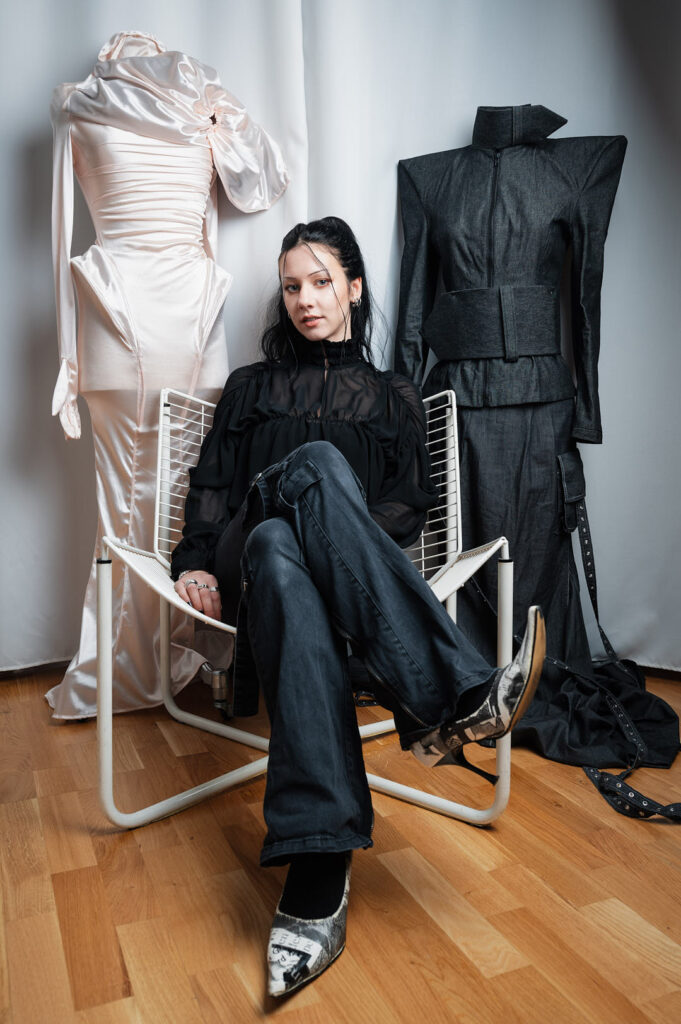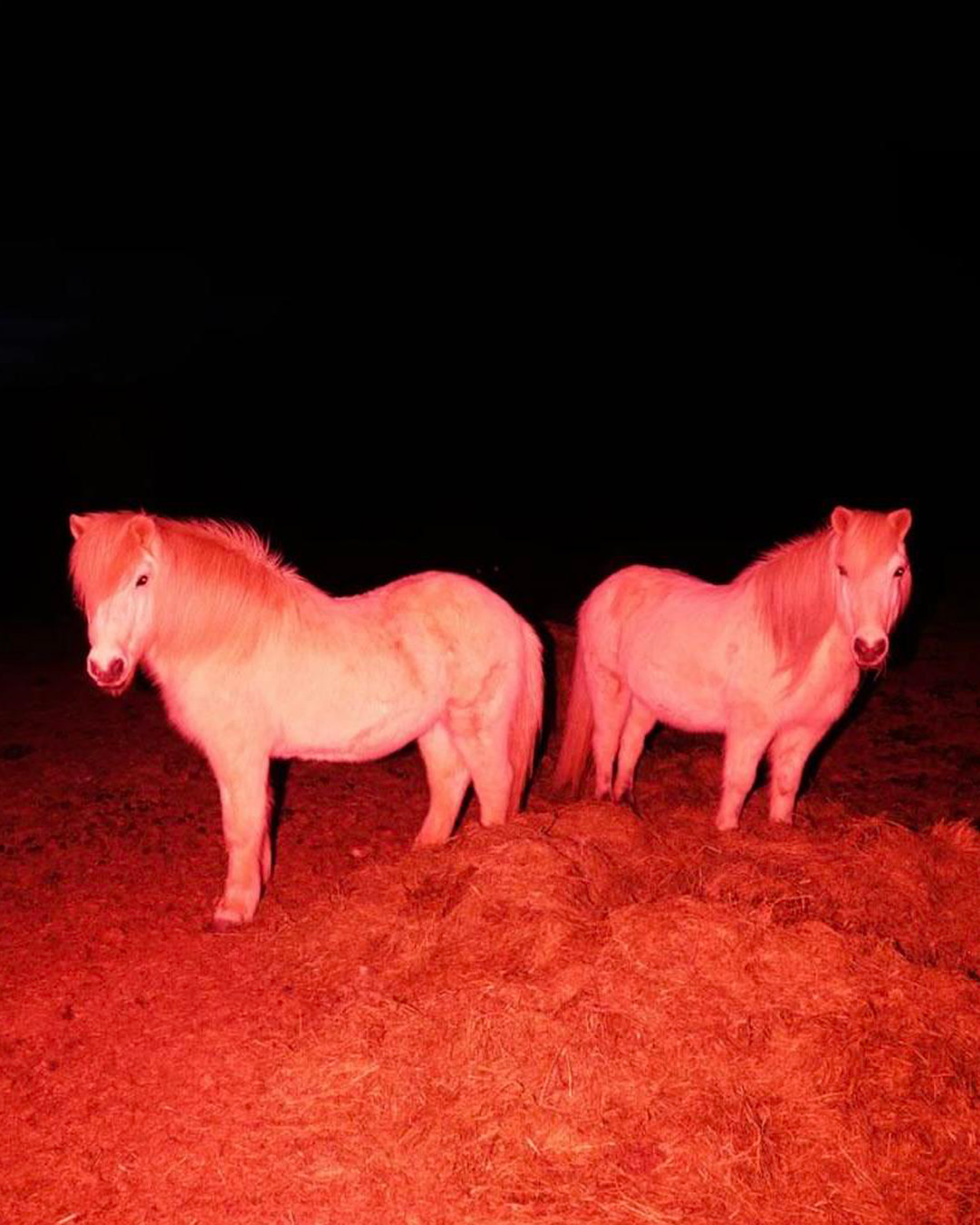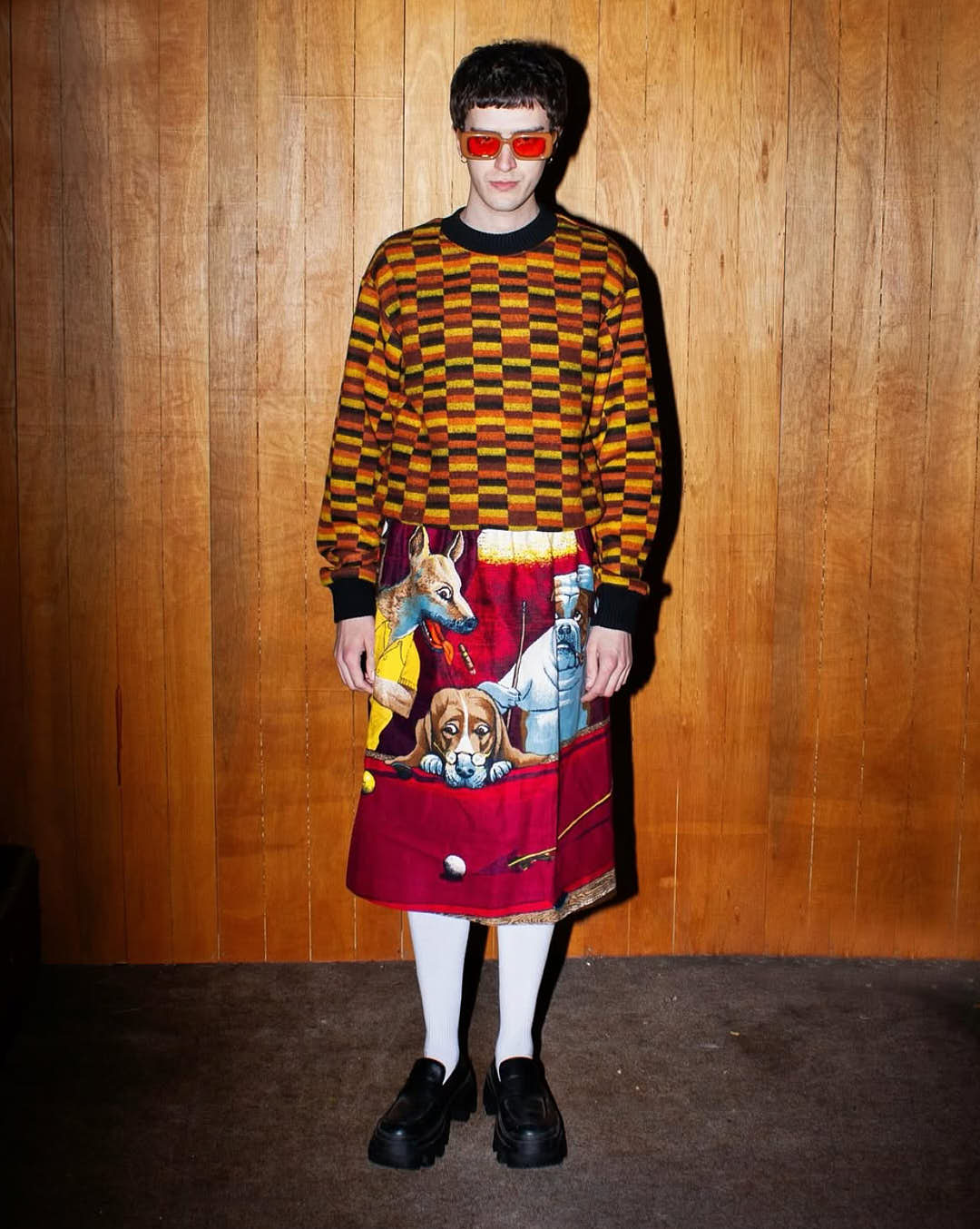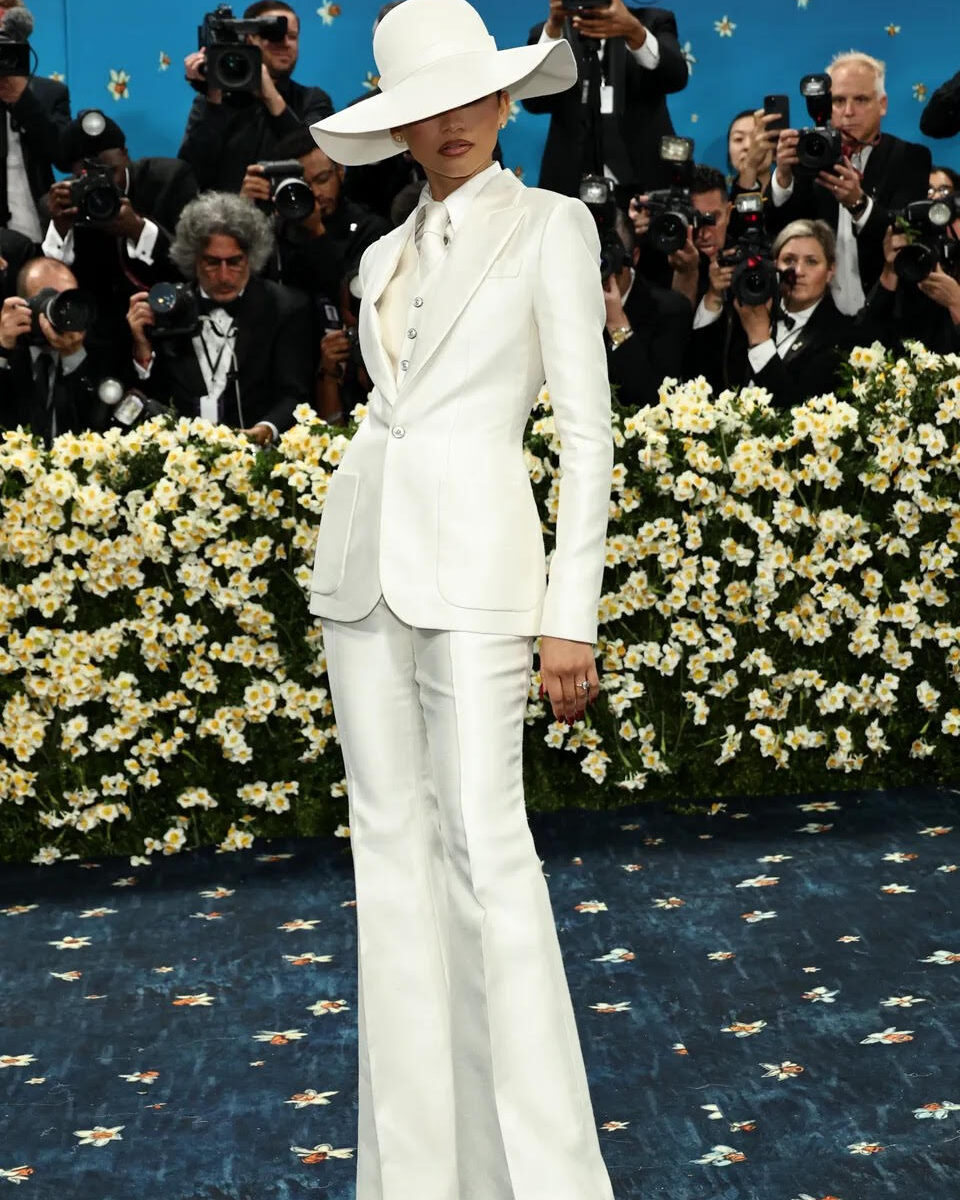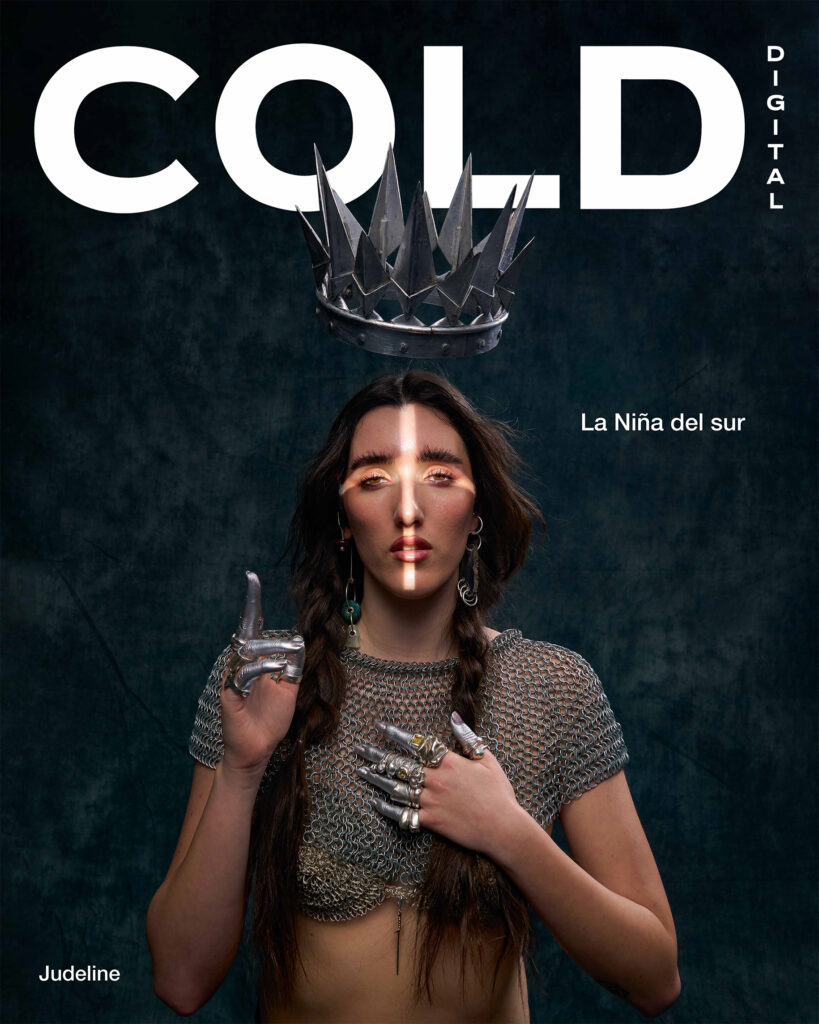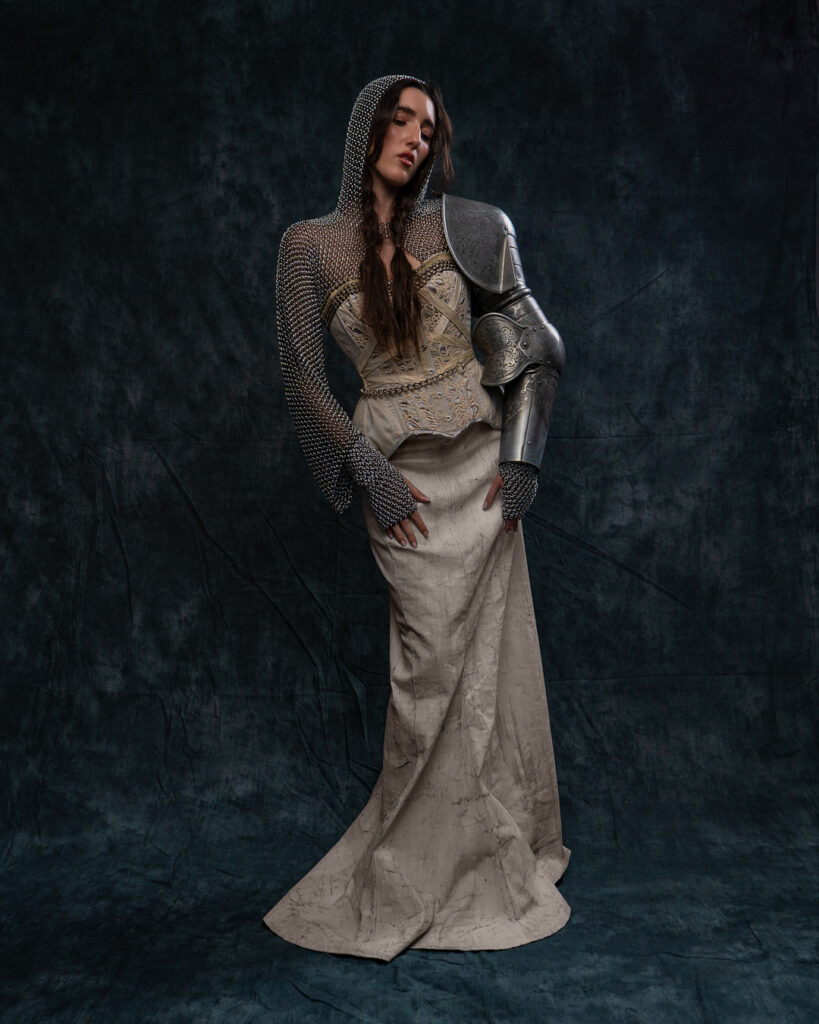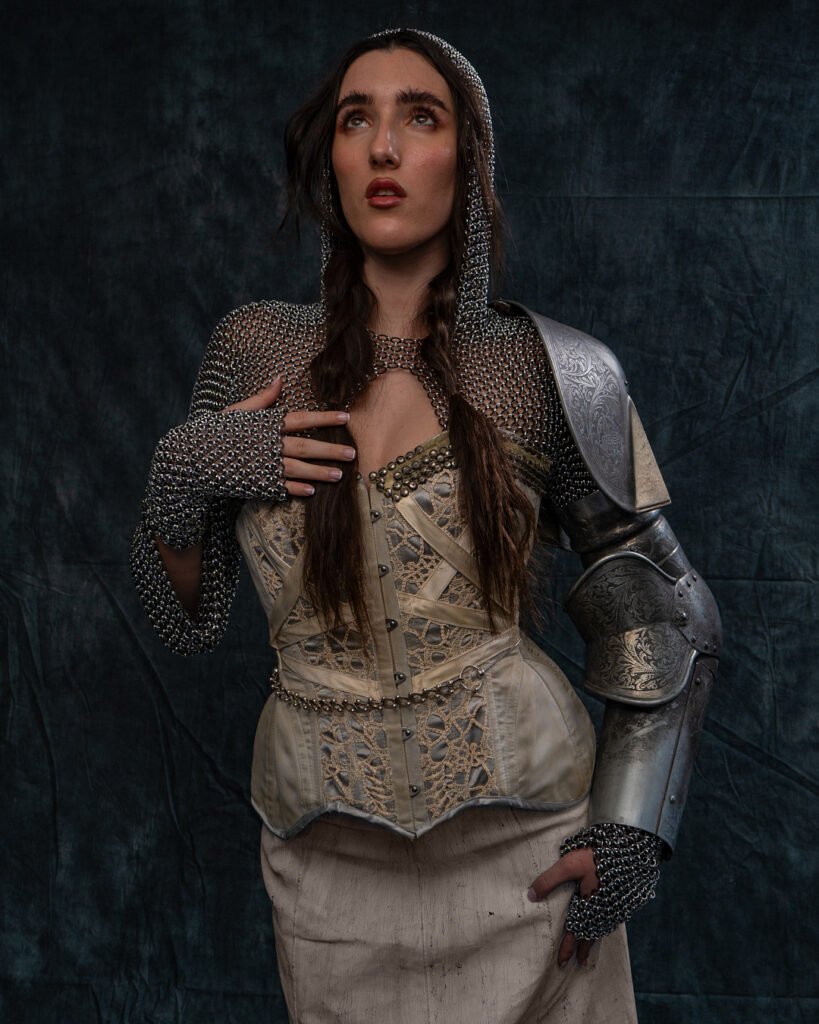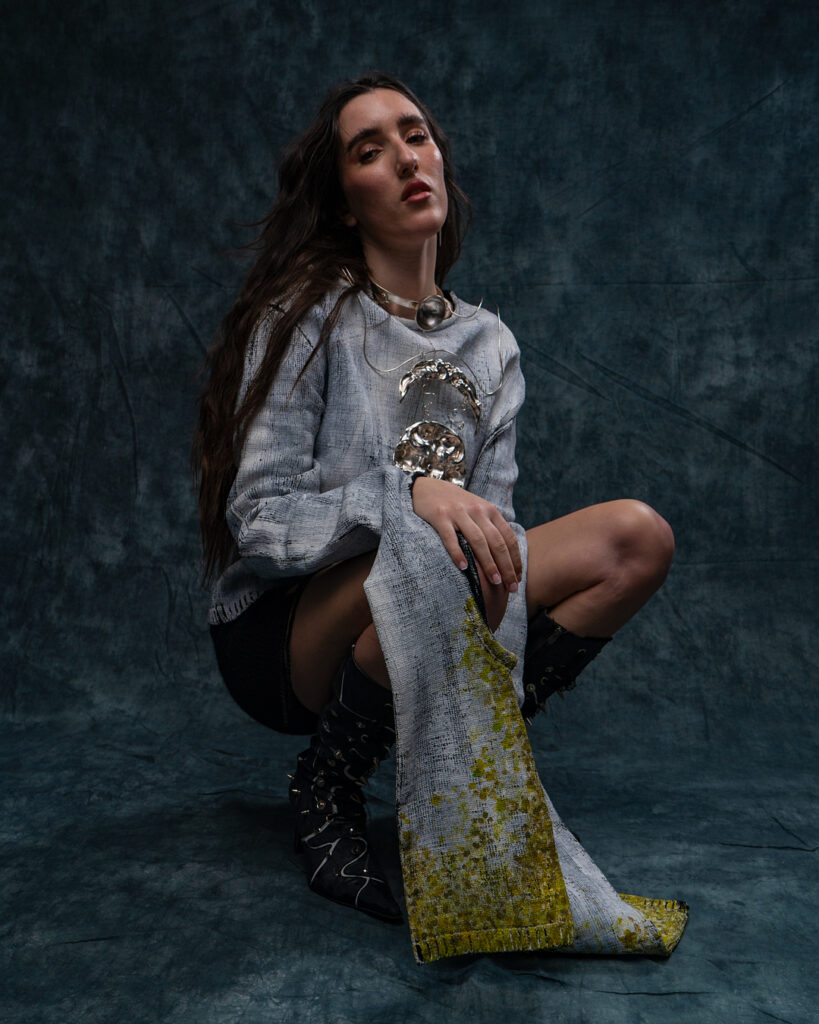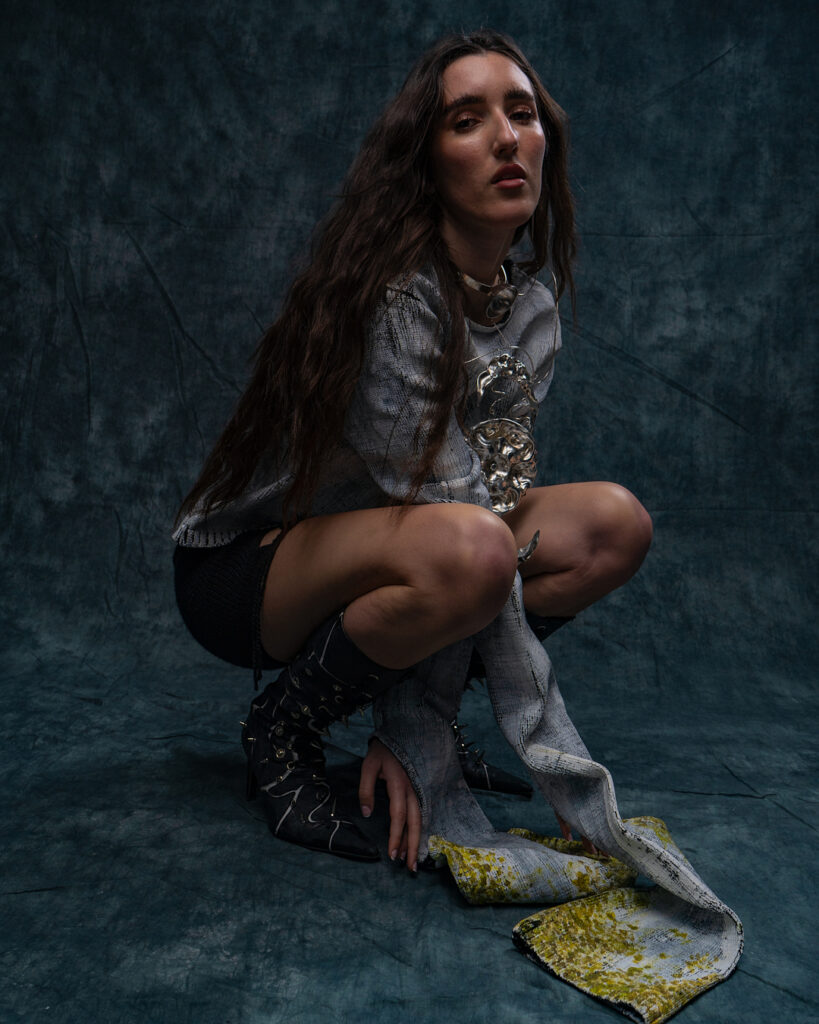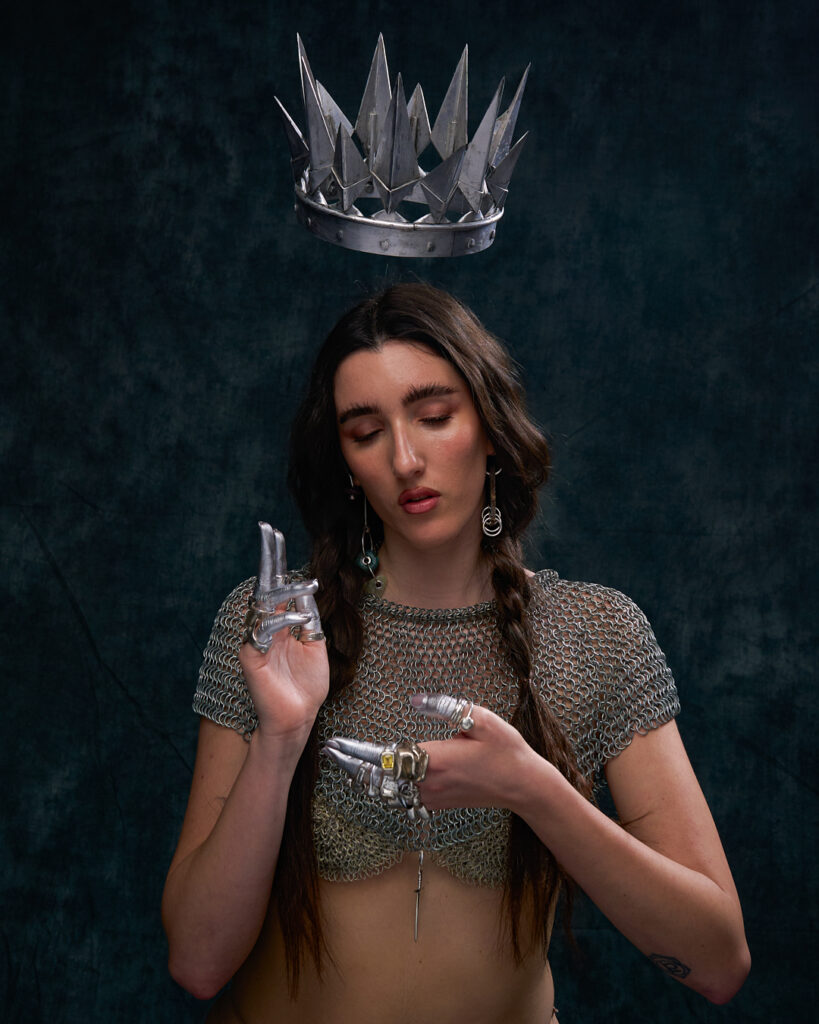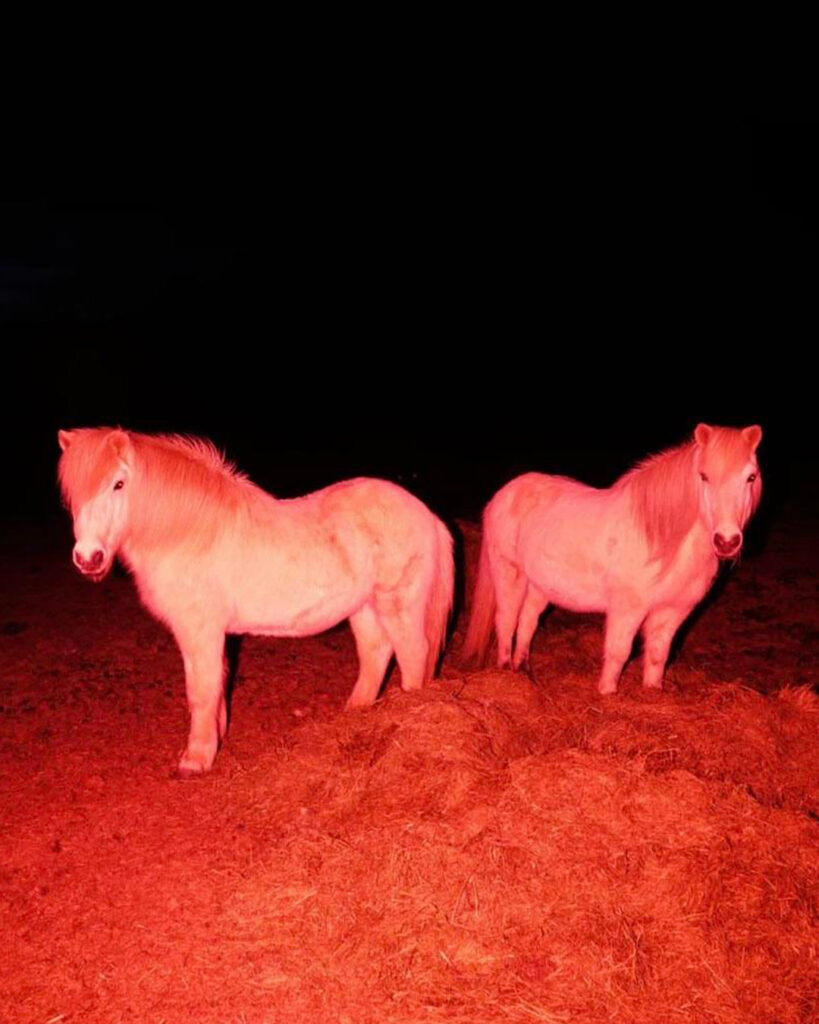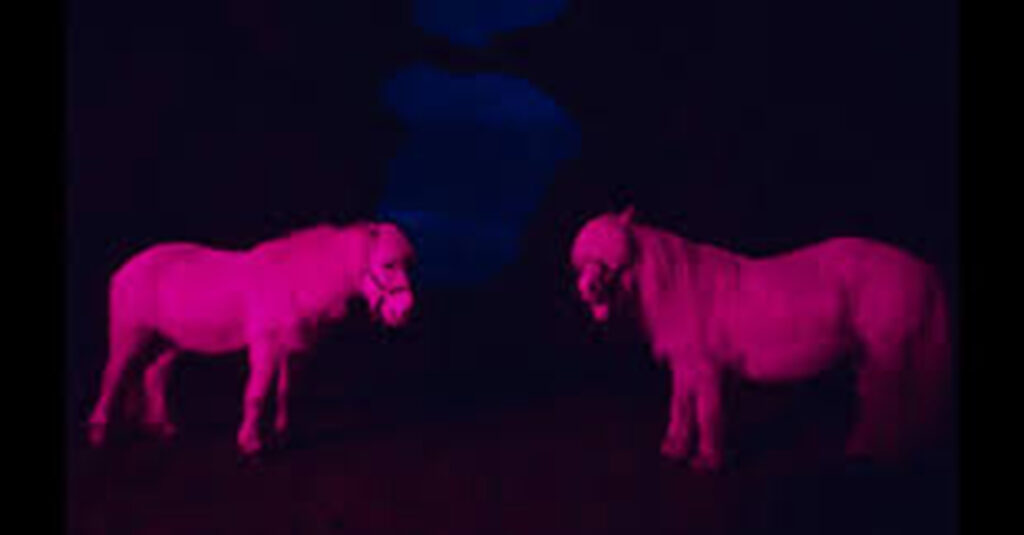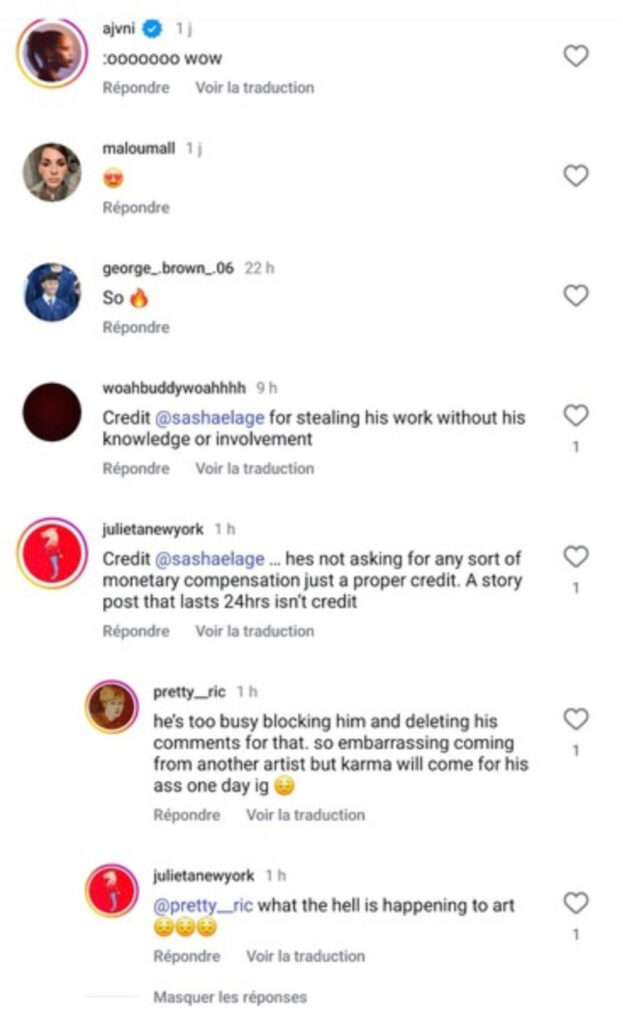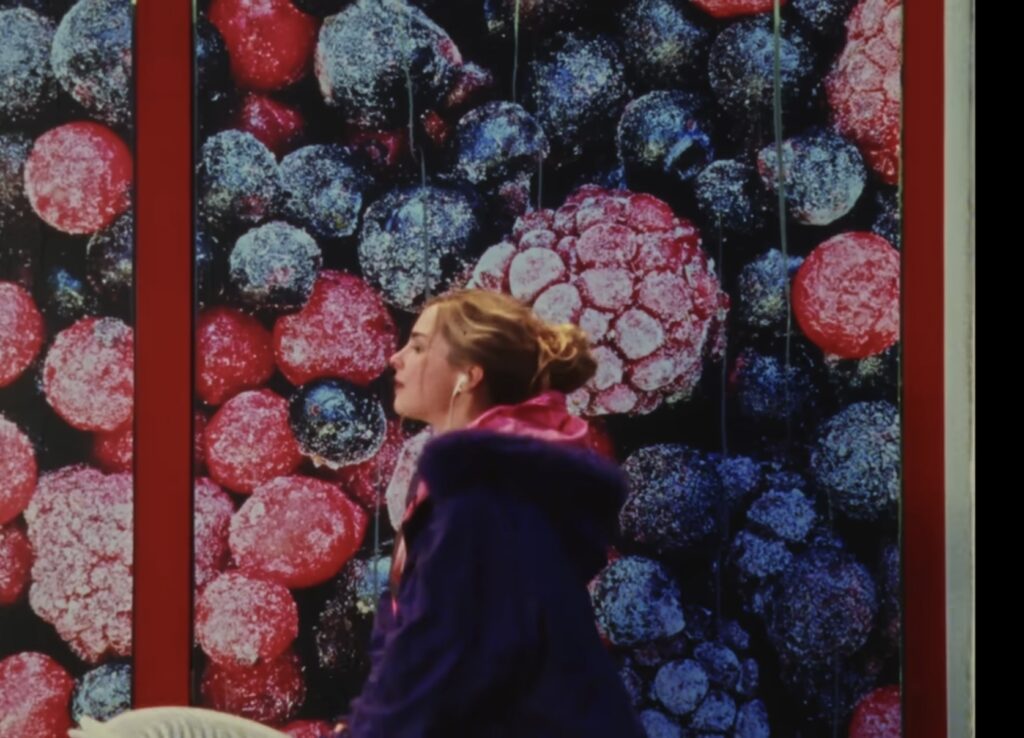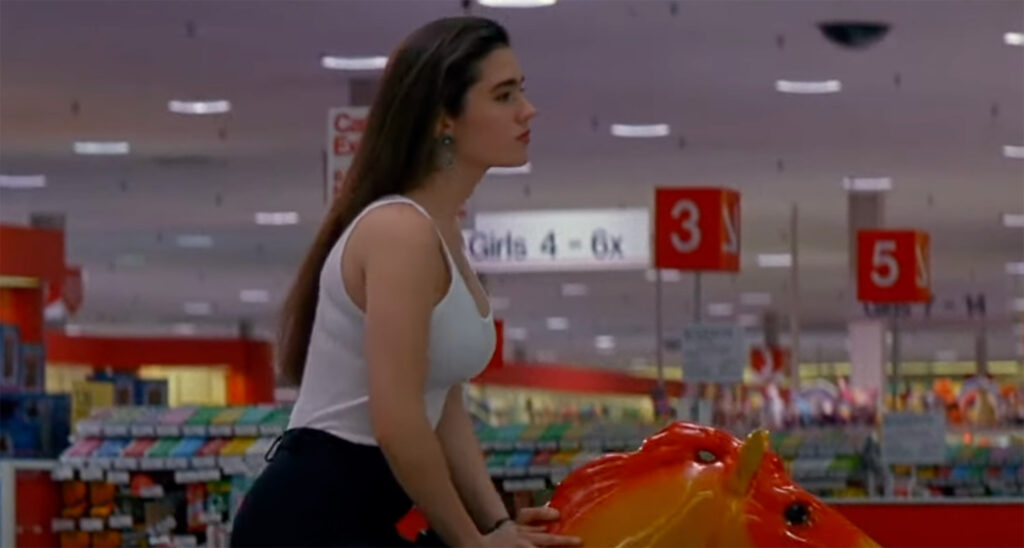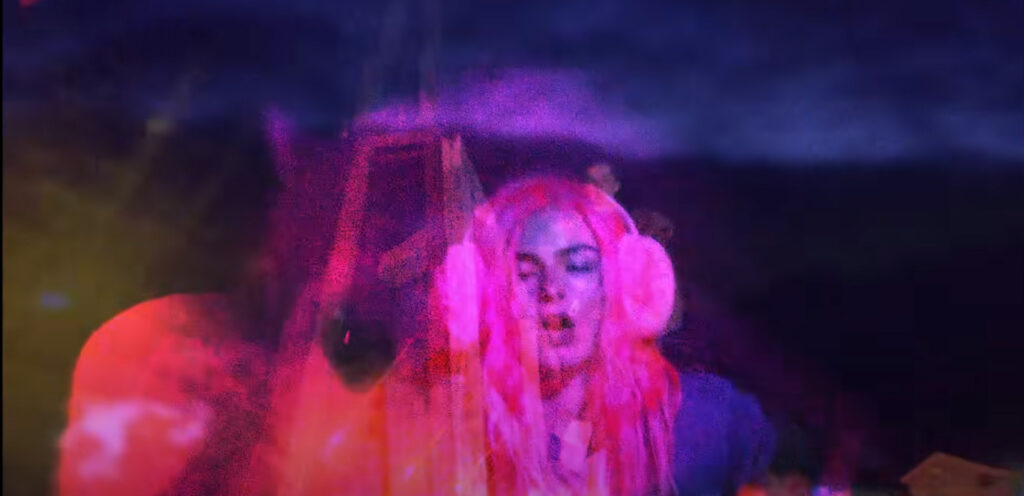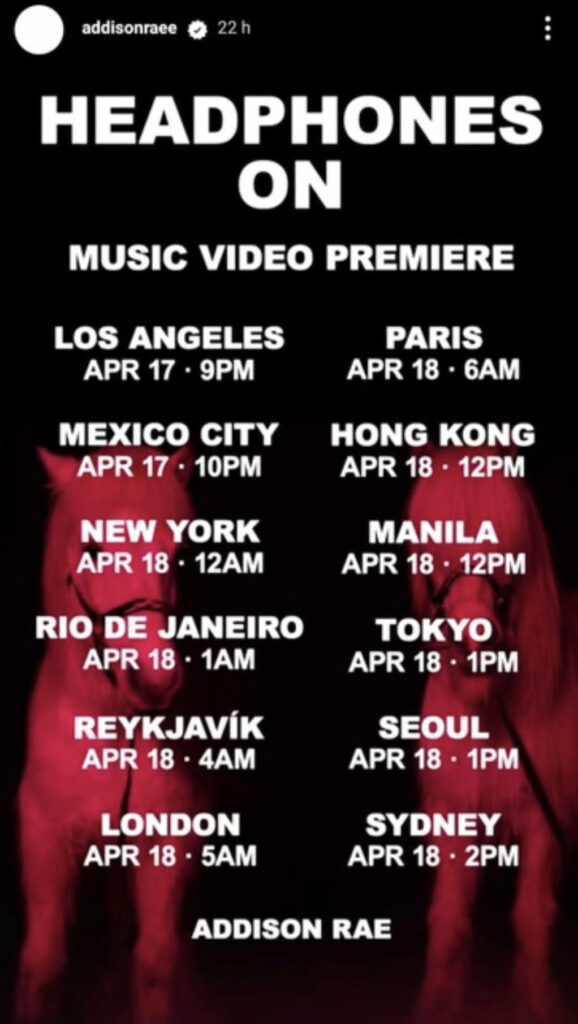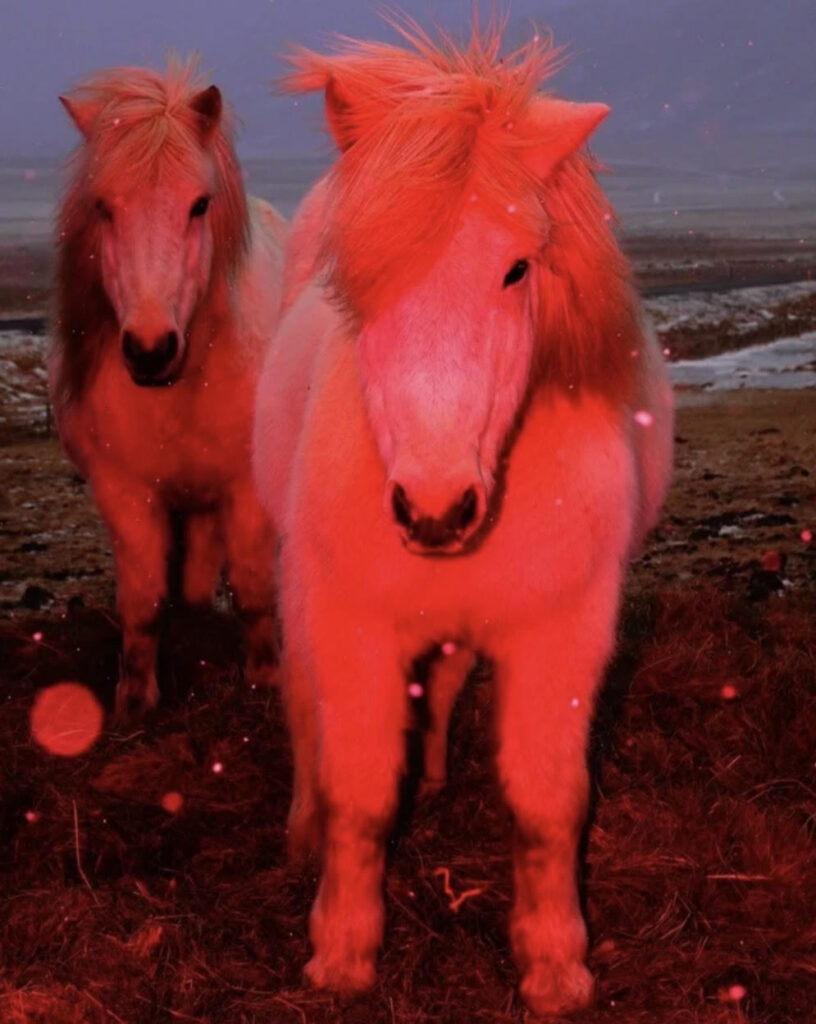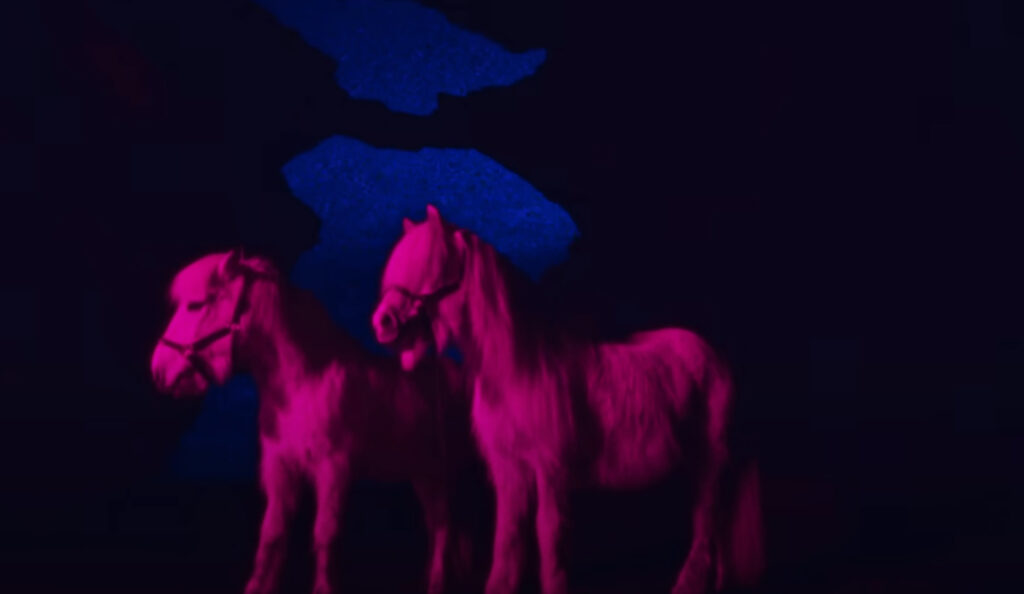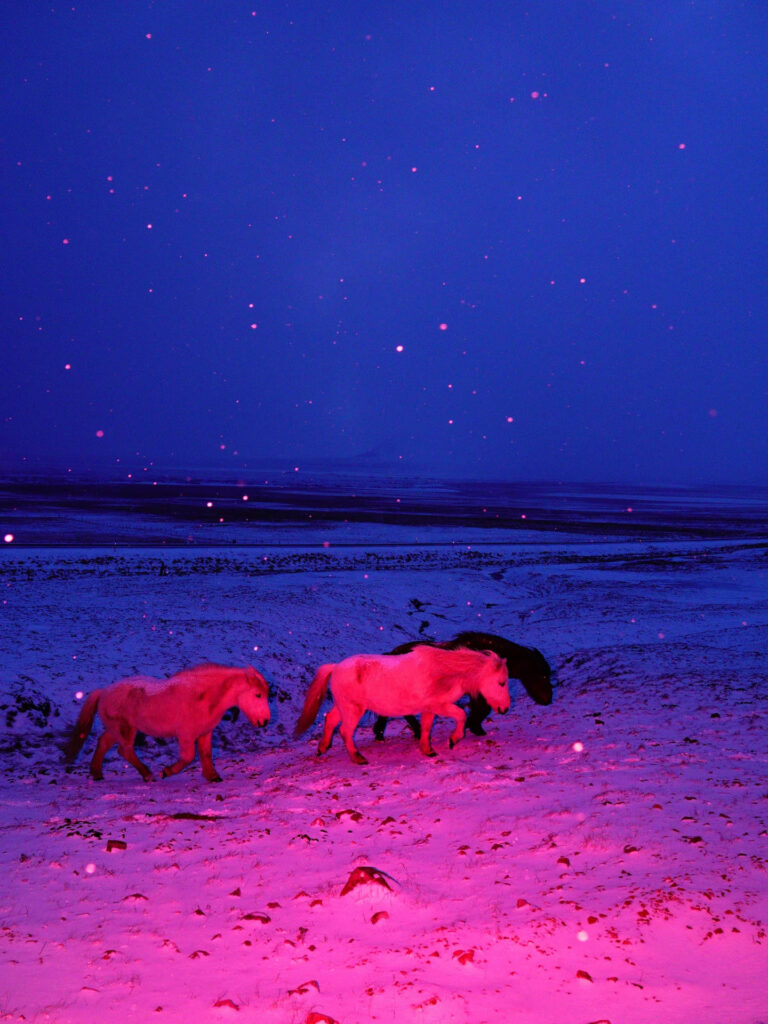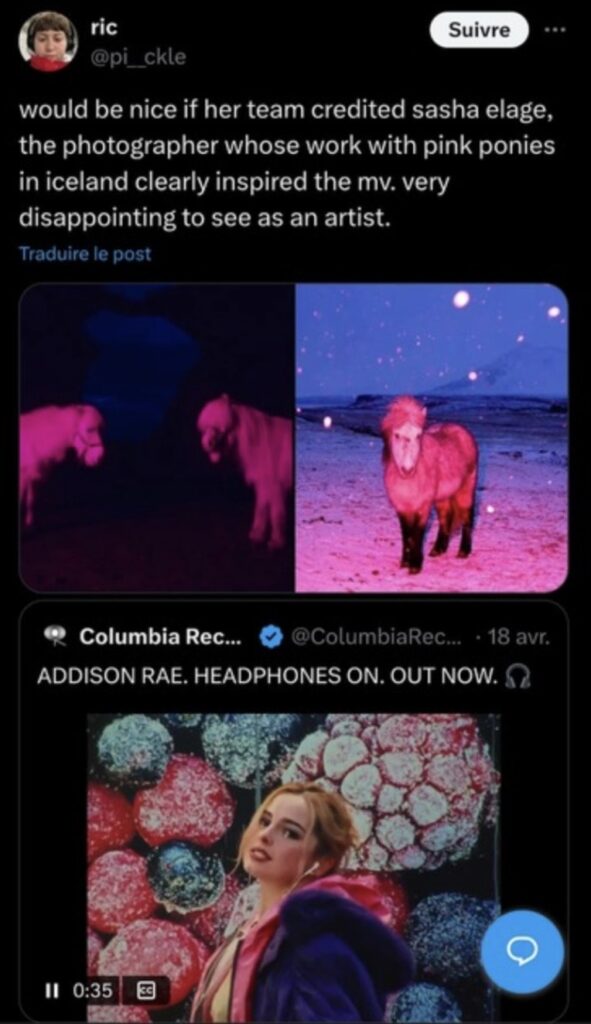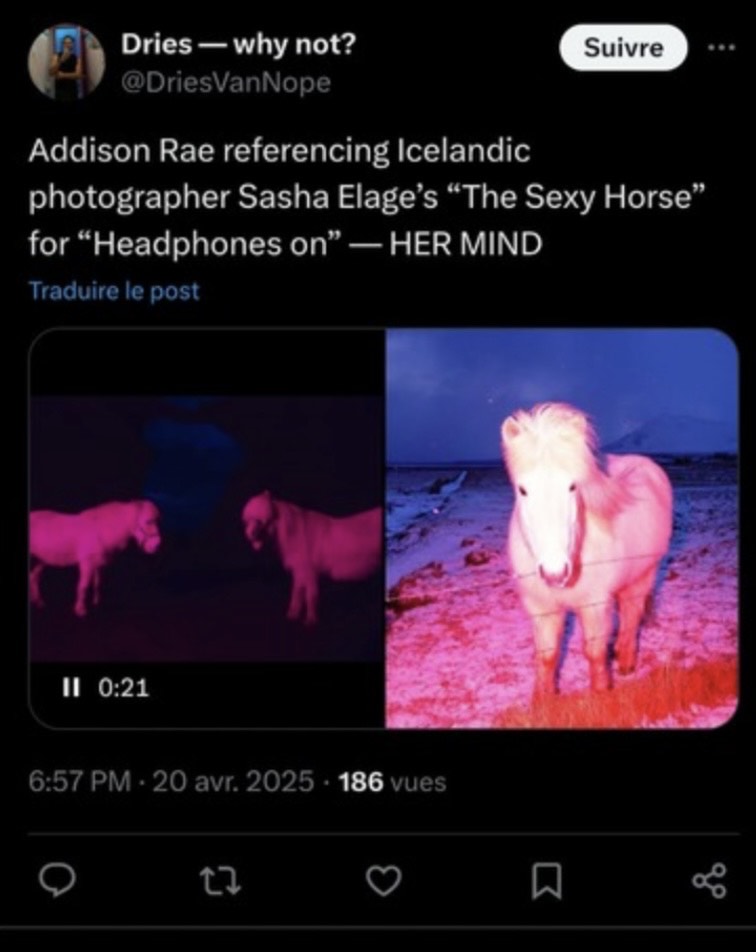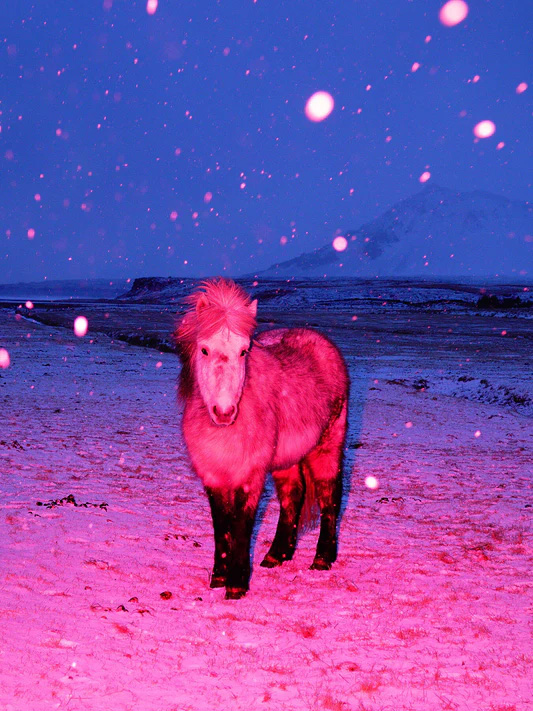Wearing the Dream: All in a Basement’s Alchemy of Couture and Illusion
Fashion has long toyed with the boundaries of perception, a concept designer Alina Braun amplifies in her collection Le Simulacre et la Simulation, where she transforms Baudrillard’s theory of hyperreality into something tangible. In his work, Baudrillard explores a world where reality is replaced by endless layers of imitation—where representations become more significant than the original, blurring the line between the real and the artificial. Braun translates this concept into fashion, turning dreamlike expressionist paintings into striking garments—fluid brushstrokes become flowing silks, while bold, clashing colors mimic the tension between reality and its imitation. This collection asserts that if reality is nothing more than an imitation, then fashion and art are its most audacious illusions.
n collaboration with surrealist artist 5JH, Le Simulacre et la Simulation translates her vivid, dreamlike imagery into oversized outerwear with painted-on prints and atypical silhouettes – draped, contorted, and fragmented. The collection’s color palette is equally disorienting—moody blacks and deep midnight blues are punctuated by electric reds, neon greens, and sun-drenched yellows, evoking the oversaturated, almost impossible hues of a dream just before waking. Inspired by visions from the artist’s dreams, this collaboration renders distorted faces and personas from an illusory plane, translated from canvas to stitch. As Baudrillard states, ‘the simulacrum is true,’ and in this collection, reality unravels into endless layers of imitation.
Beyond its conceptual depth, the collection also reimagines sustainability—not just as a necessity, but as a kind of simulation itself, transforming deadstock fabrics and recycled materials into something entirely new. Contrasts of texture, structure, and material add another layer of tension, merging dreamlike abstraction with sharp, urban silhouettes.
Following the darker, more ominous tones of Grim Reaper SS24, Le Simulacre et la Simulation marks a bold evolution in Alina Braun’s vision. In this interview, she discusses the philosophy behind the collection, the role of fashion in shaping perception, and the power of clothing to tap into the subconscious.
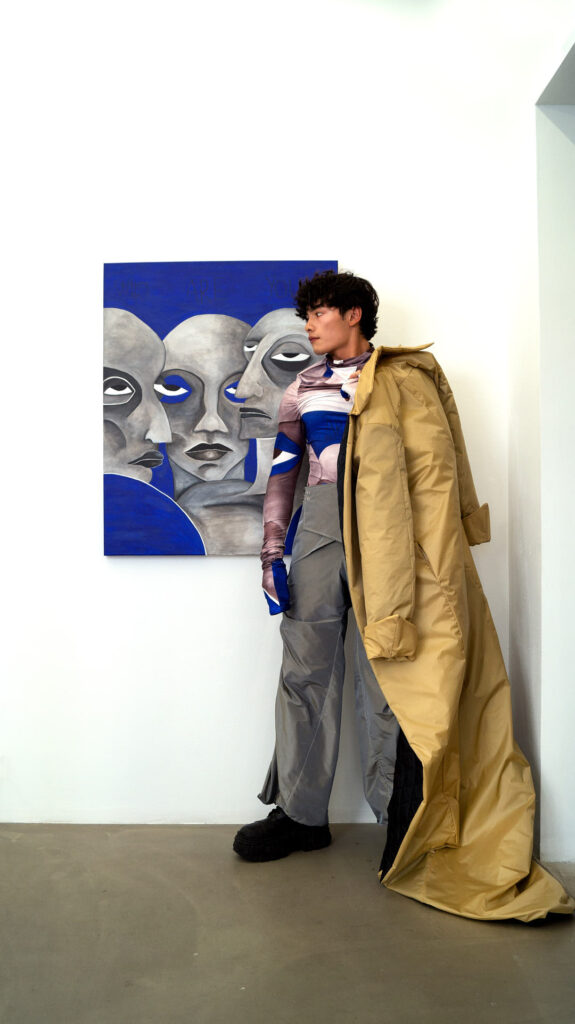
CM: Your collection takes inspiration from Baudrillard’s Simulacra and Simulation, exploring the blurred lines between reality and representation. How do you translate such abstract philosophical concepts into tangible fashion pieces?
A: I had the idea of working with an artist for my next collection, just to explore a little bit more outside of my comfort zone. Then my friend, 5JH, said she would love to explore a fashion collaboration alongside her artwork, and that’s how we came together in this collaboration. She told me about her visions, her dreams, and how she translates her dreams into her art. That’s how we slowly got into the theme—we were like, Okay, your art is basically a simulation of your dreams. I should simulate your dream art with my fashion design.
Then one day, she told me about the philosopher Baudrillard, and we realised his philosophies fit perfectly into our concept – it was exactly what we were exploring without realising it.
We continued down this line of thought—Let’s simulate your art, which is already a simulation of your dreams.
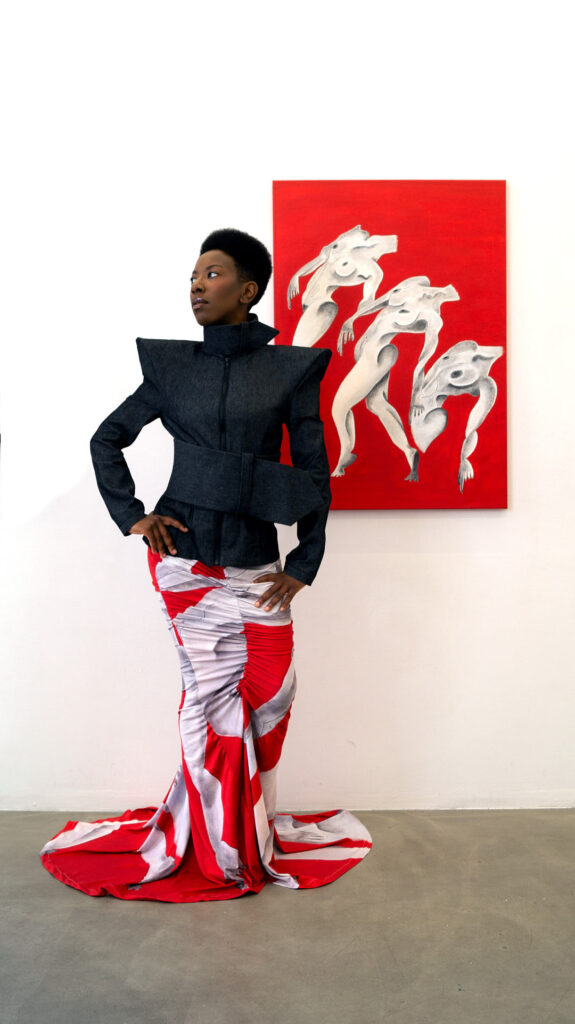
CM: The collection merges expressionist artworks with haute couture and urban wear. How do you balance artistic expression with functionality in your designs?
A: So, we looked at the paintings and named the characters we saw within them. For example, This is Jenny—what would Jenny wear if she were to step out of the picture and go about her day? We imagined her outfit based on the painting—the colors, the forms, and the overall feeling.
Then, we created looks that were both wearable on a day-to-day basis and others that leaned more into high fashion. Some dresses aren’t practical for daily tasks, while other looks are something you could wear to work or wherever you want. We tried to find a balance—not entirely haute couture, but not just street style either.
CM: So I suppose it depends on the character that you feel from the imagery, if the character is more paired down then that will be reflected in the functionality of the garments?
A: Yes, for example, we have this one painting called Explicatio. In the painting, you see a man standing in front of another painting, wearing a blazer with a big red dot and a headpiece. For this piece, we basically recreated his outfit—we made a full suit with a red circle on it to imitate what he would wear.
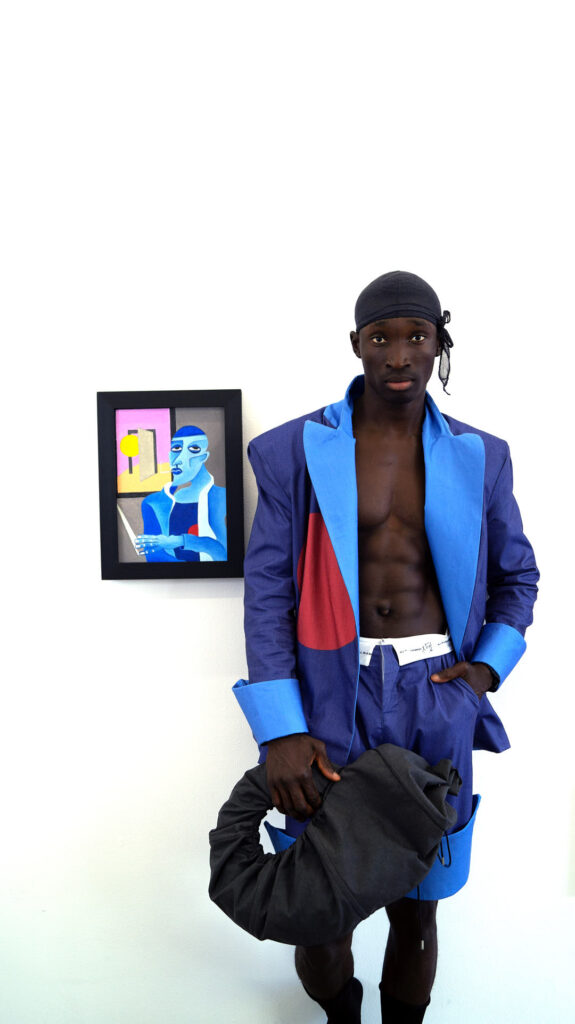
5JH’s dreams are very detailed, and every night she writes them down. In some cases, the painting reflects exactly what she saw in her dream, while in others, it’s more about capturing the feeling or atmosphere of the dream rather than an exact image.
You can never replicate something from your mind exactly as it is. Some looks turned out completely different in real life from how we imagined them. In reality, the materials aren’t always available, and the patterns don’t match exactly as envisioned. It’s like the simulation is never a perfect simulacrum.
CM: You’ve described the artworks in this collection as simulacra—representations of something that no longer has an original. How do you see this idea reflected in the way fashion itself functions today? For example, trends from the 90’s circling back round to have relevance today.
A: I feel this is always relevant—you can’t reinvent the wheel. Designers are limited in what we can do that’s truly revolutionary because so much has already been done. You see it on the runway all the time—designers drawing inspiration from past collections or other designers. I think everyone is, in some way, simulating something they’ve experienced. For example, I get inspired by things I saw as a child, music, or whatever has influenced me. In the end, it’s all just a simulation of our experiences.
I don’t think it’s bad to be inspired by something that has come before—I feel like everyone should embrace this process. Obviously, outright copying isn’t right, but drawing inspiration from something is inevitable nowadays.
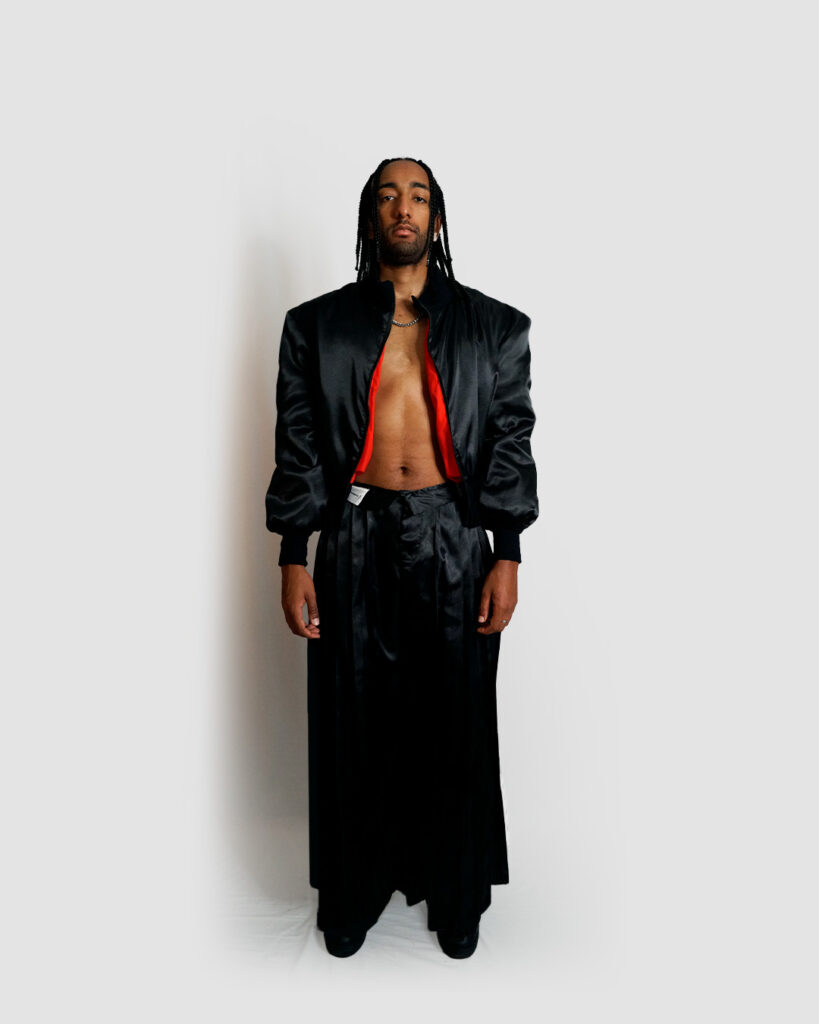
CM: The collaboration with 5JH brings an intensely personal and surreal quality to the collection. How did you work together to ensure the essence of her paintings remained intact while adapting them to wearable garments?
A: Since we live in the same city, it was really easy—we would meet up for coffee or dinner, and I’d always bring my iPad to sketch on. We had already chosen all the paintings we wanted to use for the collection, so we would sit down and think: What can we take from this character? What can we take from this painting? What shape can we use to merge it all together?
For example, there was one painting, El Arpa Deva, that really inspired us with its shapes. We incorporated the high hips from the painting into our designs. That’s how we worked together—we would get inspired by a shape and then figure out how to translate it into the looks.
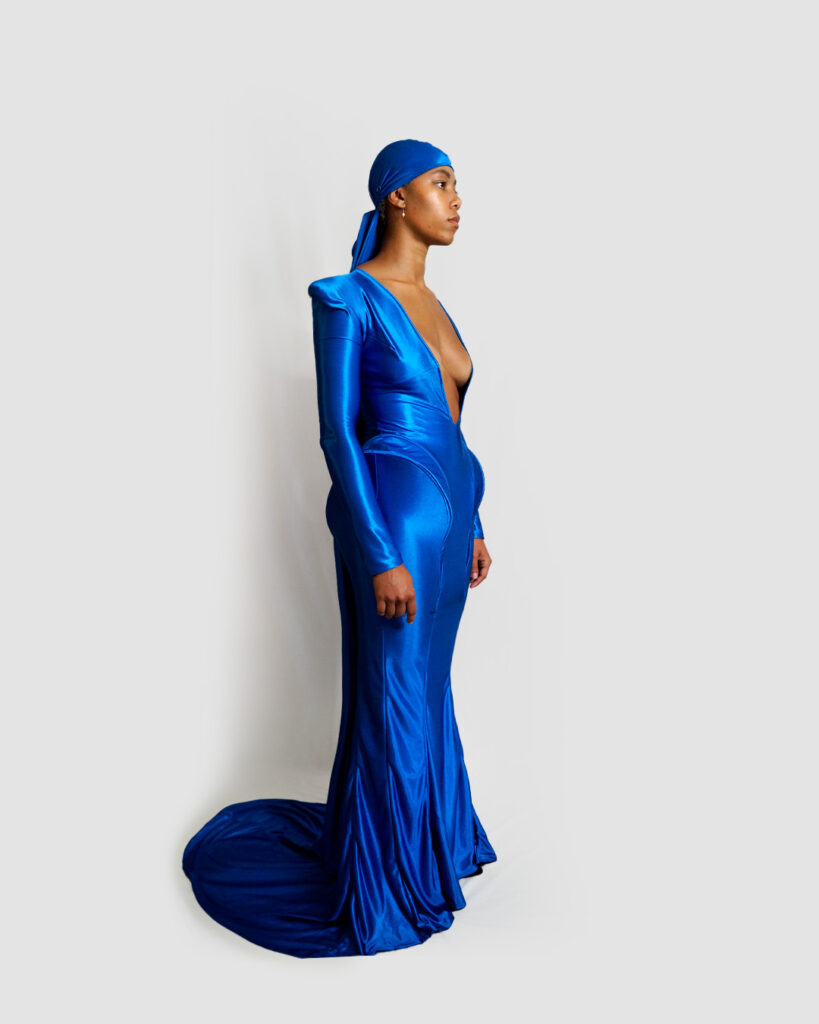
CM: How in-depth did you go with your discussions of the characters? How important was this devising in the process?
A: Not that much, actually. We gave them names and a general energy, but she told me I should also interpret the characters myself since I’m essentially simulating her work. So, I would think, Maybe this character would wear something flowy instead of something very structured. That’s basically how we worked with the characters.
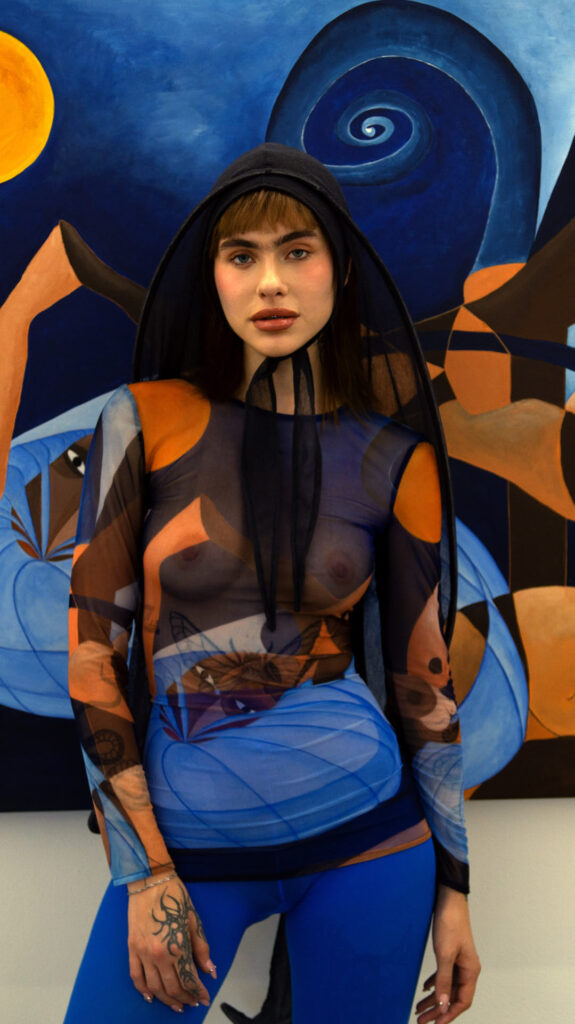
CM: Many of the materials used in the collection, like deadstock fabrics and recycled PET bottles, highlight sustainability. Do you see sustainability itself as a form of simulation—reinventing the past into something new?
A: You could say it’s like a simulation because you’re taking materials that already exist—materials that would otherwise end up in a landfill—and interpreting them in a completely new way. Every piece of fabric becomes a blank canvas, allowing you to create something only your mind can imagine.
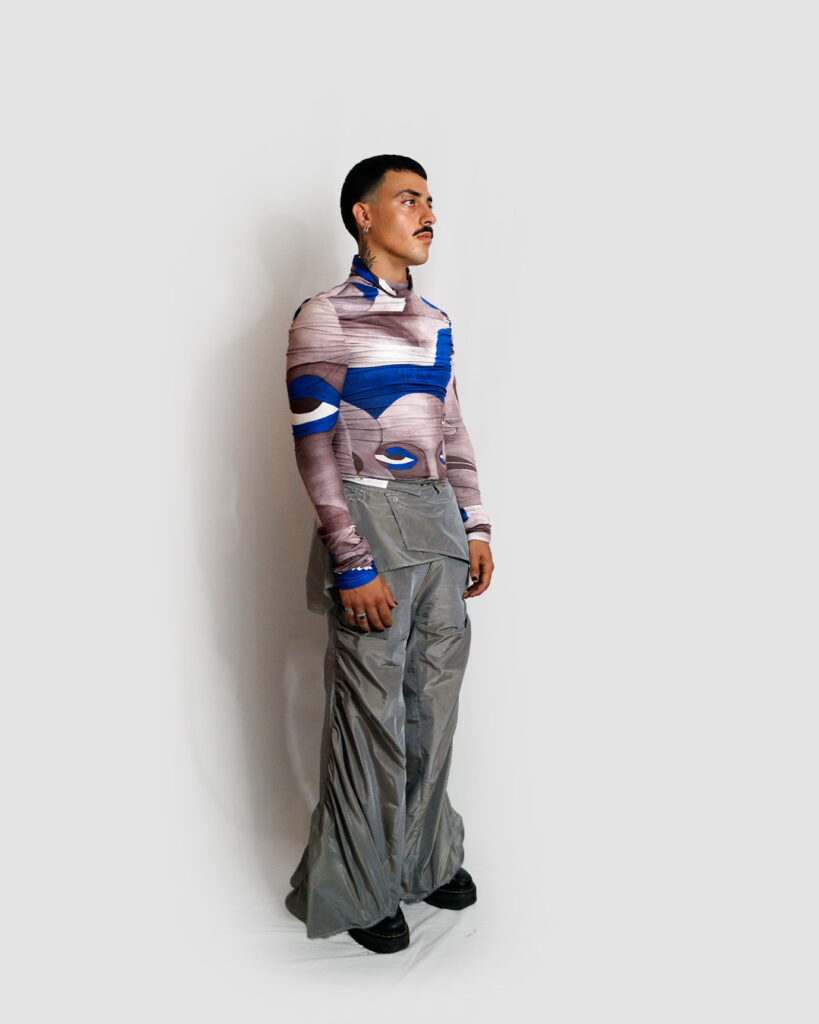
That’s the difference. With upcycling, you’re limited in what you can do, so you have to be creative with what you have. But when working with deadstock fabric, the possibilities are much broader—you can create whatever your mind envisions.
From the beginning, I’ve tried to make my brand as sustainable as possible, and I still do. It doesn’t always work for everything, like zippers—I try to buy them second-hand, but sometimes there are limitations. However, with fabrics, I only buy deadstock, and I think I’ve never actually bought new fabric. It’s difficult, but it’s worth it. I don’t want to create more waste than necessary, so I take materials that nobody wants and turn them into something new.
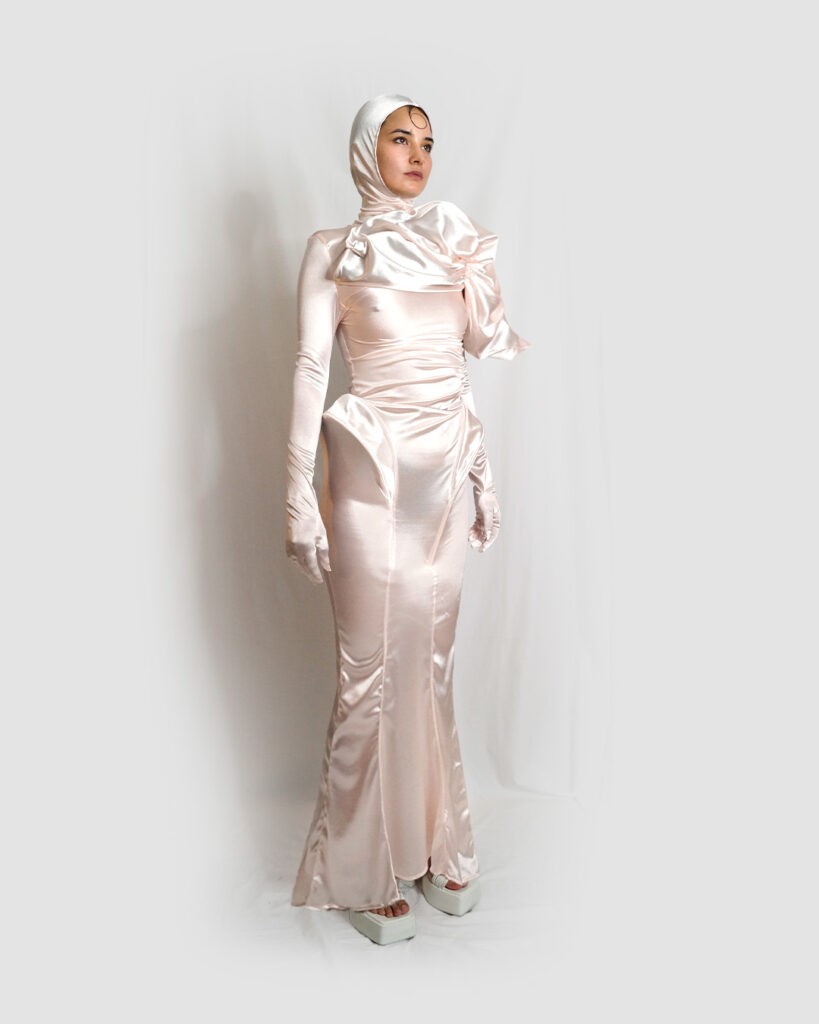
For this collection, we also wanted to be as sustainable as possible. I checked all my previous fabric sellers and found exactly what I needed—it was perfect. Since this was my first time working with printed fabrics rather than plain ones, I did a lot of research and came across some great companies, like Amothreads and House of You from the Netherlands. The one I’m working with now recycles PET bottles into fabric and prints in a climate-neutral way, which aligns perfectly with my sustainability goals.
CM: Dreams and the unconscious play a key role in 5JH’s artistic process. Do you think fashion has the power to channel these subconscious narratives in the same way art does?
A: I think it does—it really depends. Of course, with fast fashion from brands like Zara and H&M, the goal isn’t necessarily to evoke emotions; it’s just about having clothes to wear. But when you look at fashion shows and showrooms, there are pieces that evoke emotions and different feelings, much like paintings do. It might vary from person to person, but that’s how it is for me.
CM: Also, some of those things aren’t so accessible to people who don’t work in fashion, so this collection is interesting in making that bridge more accessible.
A: Yes totally, and of course people have done similar things before where they work with artists to a similar end, but I feel like not many of those are very accessible. In terms of price, this collection is reasonable for what you get because, essentially, you’re buying an art piece, not just a piece of clothing.
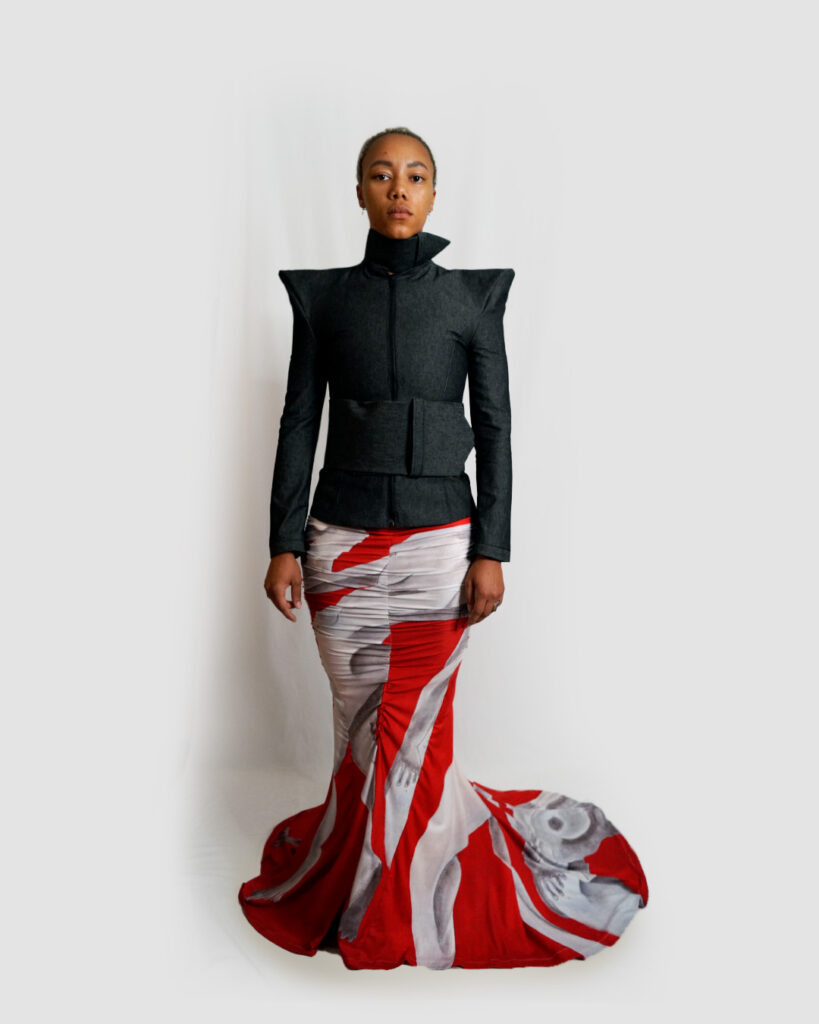
CM: Your previous collection, Grim Reaper SS24, had a darker, more ominous theme. How does Le Simulacre et la Simulation build on your previous work, and where do you see your design philosophy evolving from here?
A: My first collection Grim Reaper was a way for me to find my style. I am still not completely where I want to be with my designs, thats why I chose to experiment with my latest collection Le Simulacre et la Simulation, by trying new techniques and ways to build a look. With the new collection, I tried to add some of my previous design elements by adding sheer materials, flowy cuts, long dramatic trains and unexpected shapes. For the first time with the new collection I had the chance to explore stronger structural features such as big shoulders, playing with boning material to simulate a new body shape and more colors. I think in the future, this will encourage me to go more out of my comfort zone and try new techniques to make my vision and style more consistent.
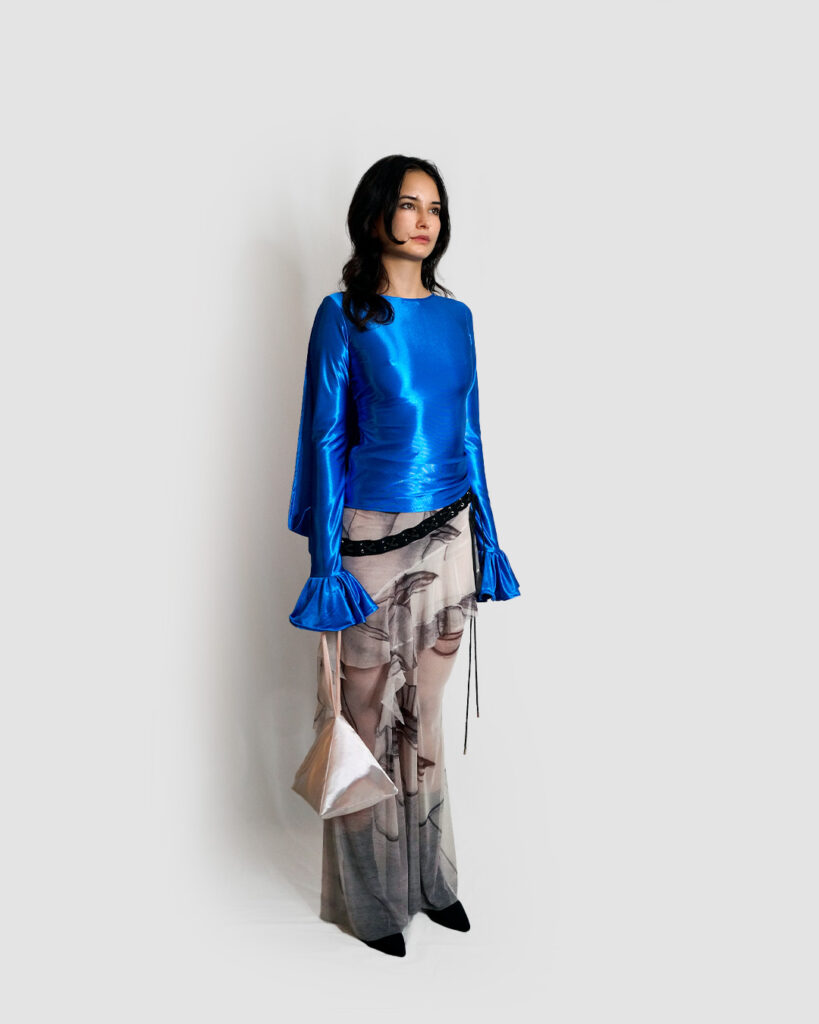
CM: Beyond the garments themselves, what kind of feeling or reaction do you hope people will have when they see or wear this collection?
A: I hope people create their own image—their own simulacrum—from what we’ve tried to simulate. I want them to interpret the outfits in their own way and find personal meaning in them. Of course, I also want them to feel like a work of art themselves when they wear a piece from the collection.
Words by Lily-Rose Morris-Zumin
